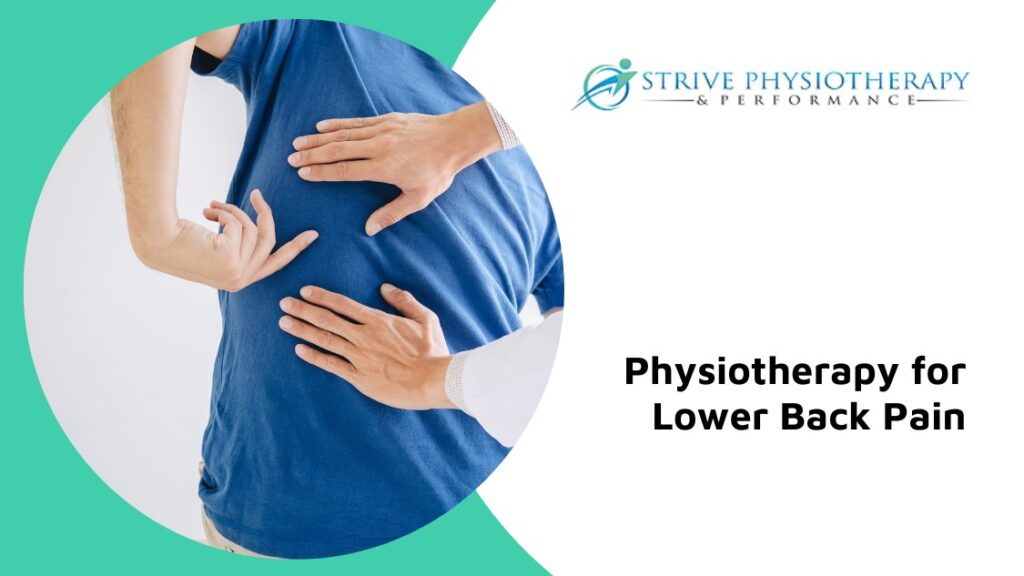
Virtually everyone experiences lower back pain at some point in their lives. Even if you aren’t a person who sits in front of a desk all the time, the pressure from heavy lifting or lugging heavy items for extended periods, extended reaching or stretching, enjoying sports, running or any range of other activities can trigger lower back pain or chronic pain. Fortunately, there are numerous methods to ease lower back pain and stop it from coming back.
Cultivating a healthier life style can go a long way towards preventing back pain. Nevertheless, when discomfort does occur, there are multiple treatment choices out there that can help relieve the pain and prevent recurrence.
In this post we’ll investigate some different physiotherapy treatments for lower back pain and their efficacy in alleviating discomfort and helping prevent re-injury.
Manual Therapy
One of the most tried and true treatments offered, manual treatment is a powerful means to deal with lower back pain. Physiotherapists work with an assortment of strategies, encompassing joint mobilization, soft tissue re-positioning, extending exercise and electrotherapy to decrease swelling, boost blood flow and relieve discomfort.
In fact, a 2017 research study discovered that hands-on therapy, similar to massage therapy, was the most effective treatment alternative for lower back pain.
While hands-on therapy won’t get rid of the underlying cause of your lower back pain, it can alleviate discomfort and decrease recurrence. If your pain is caused by a specific injury, such as a sprain or strain, hands-on therapy can help lessen swelling and restore mobility and strength to the afflicted spot.
If your pain is caused by excessively tight muscles, manual treatment can help to restore them to their regular length and overall flexibility. It is very important to bear in mind that hands-on treatment can take multiple sessions to start relieving pain. It’s best to talk to your physiotherapist prior to starting treatment.
Ultrasound Therapy
A therapy method that supports tissue healing and pain relief, ultrasound treatment is likewise often employed by physiotherapists to treat lower back pain. Though research is indefinite regarding the performance of ultrasound therapy on lower pain in the back, some research studies have found that it can substantially lower pain and promote recovery amongst patients. In fact, a 2019 study discovered that ultrasound treatment is just as effective as medication for easing pain.
Like manual treatment, ultrasound therapy works by increasing blood flow and reducing swelling. It likewise promotes tissue recovery and can be very beneficial in dealing with soft tissue injuries. When it pertains to lower pain in the back, ultrasound treatment is best used as a treatment to ease pain, minimizing reoccurrence when routinely utilized as part of a pain management methodology.
TENS Systems
Transcutaneous Electrical Nerve Stimulation (TENS) is another therapy approach your physiotherapist may employ to relieve lower back pain and promote recovery.
How does it work? TENS units supply mild electrical impulses to the nerves near the site of your pain, reducing the feeling of discomfort. Some TENS systems have discs that are placed on the area of discomfort, which extend the advantages of TENS treatment. These discs can be used on their own or with a TENS device.
While TENS units and discs work in treating low-grade pain, they don’t supply long term relief or treat the underlying reason for your pain. They are best employed as part of a short-term discomfort management strategy, for instance after an injury. While TENS systems and discs demonstrate promise in lowering discomfort and promoting recovery, they aren’t encouraged as a long-term therapy choice.
Exercise
Regular physical activity is one of the most beneficial ways to prevent lower pain in the back and the beginning of other health concerns. If combined with other treatment choices (such as medications and hands-on treatment), corrective exercise might be a lot more reliable at easing pain and promoting healing. Your physiotherapist can prescribe specific movement and stretching type of exercises that will help build up and loosen your muscles, enhancing your lower back health.
While aerobic workout is most commonly recommended to deal with lower pain in the back, resistance training as part of physical rehabilitation can also relieve pain and promote recovery. And these exercises are all the more effective for active individuals in their daily lives.
When it comes to lower pain in the back, frequency and time frame matter. Routinely taking part in moderate physical exercise for approximately thirty minutes can help relieve discomfort and promote recovery, especially if you’re experiencing severe lower back pain.
If you’re suffering from long-term lower back pain, you may want to think about high-intensity interval training, or HIIT: a kind of workout that has been shown to be effective in promoting recovery, building up muscles and minimizing discomfort. Once again, your physiotherapist can propose a workout routine that’s particularly customized to your unique condition.
Bottom Line
Pain in the lower back can seem excruciating, most especially if it’s chronic. While there are lots of methods to relieve lower back pain and help prevent it from repeating, it is very important to customize your treatment strategy to your particular needs.
While one treatment may work in dealing with discomfort in one person, it might not be as successful in another. It’s important to be flexible and try out multiple treatment options with your physiotherapist until you discover one that performs best for you.
Contact the health care professionals at Strive Physiotherapy in Kitchener Waterloo today and we can start relieving your lower back pain and improving your quality of life. Now booking new appointments!